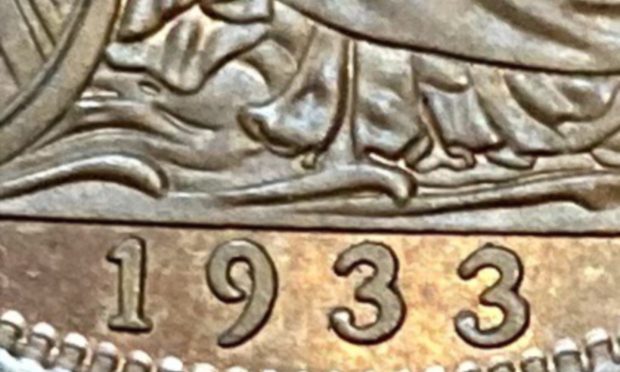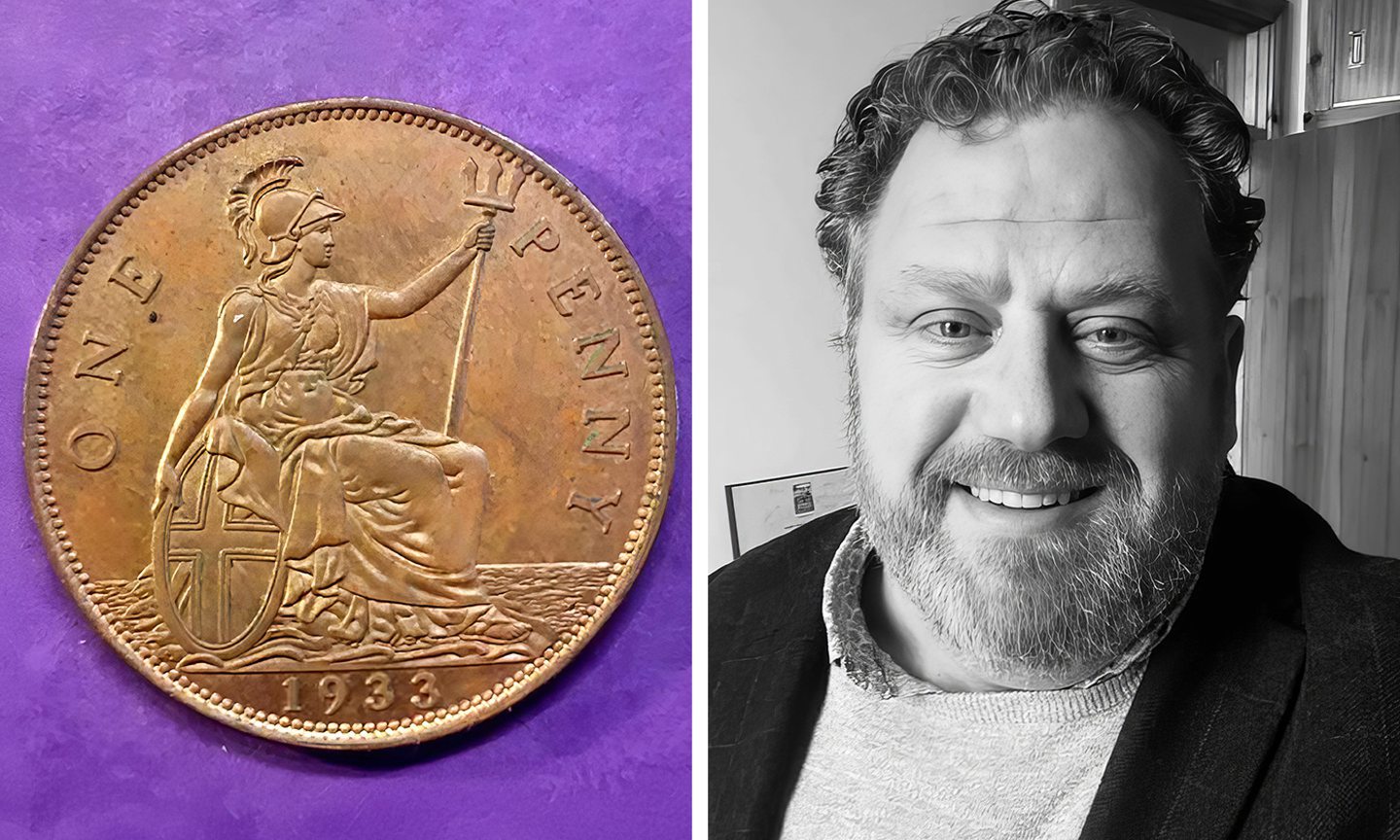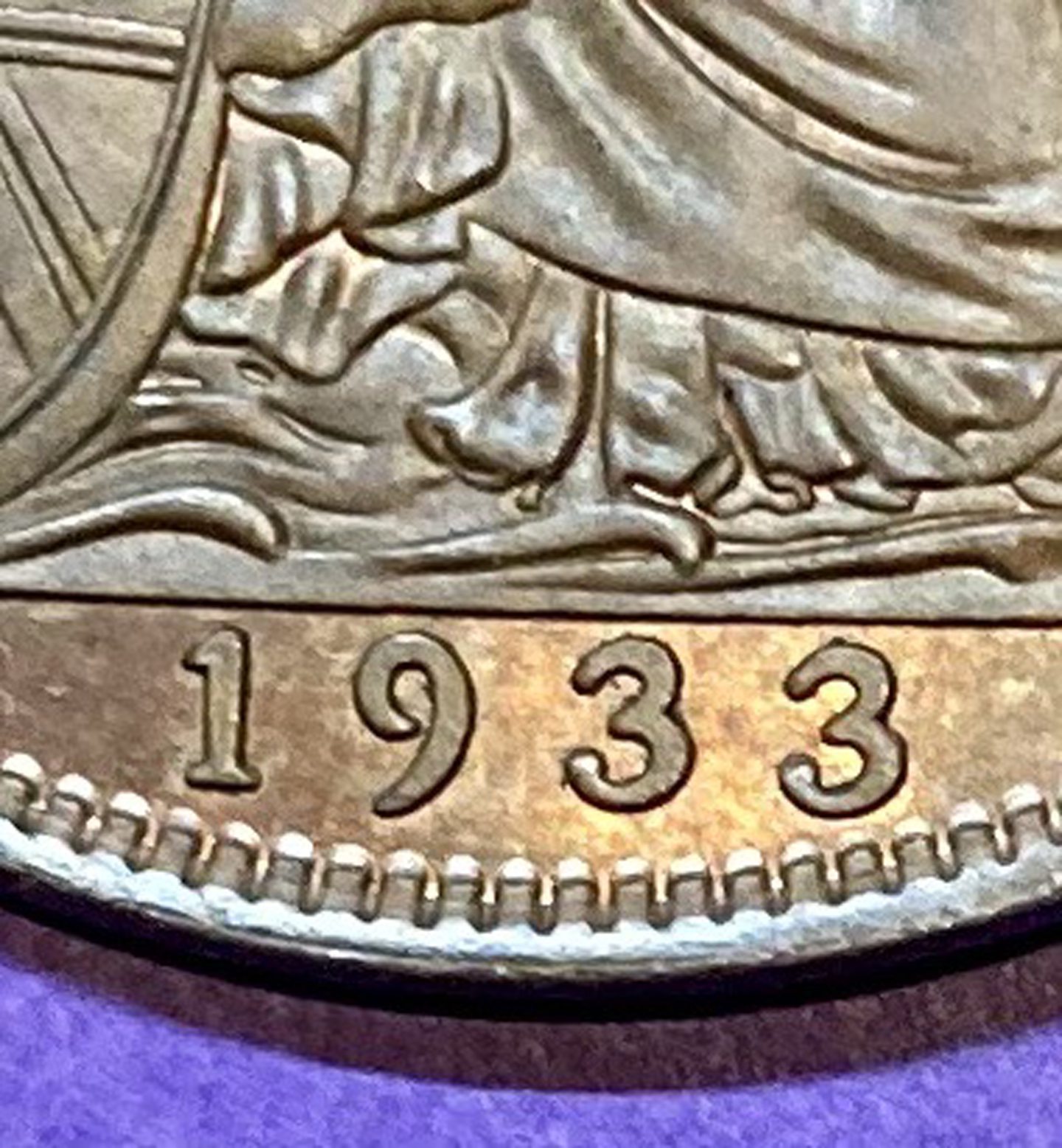The authenticity of a 1933 penny that arrived in a Tain shop has been revealed.
A customer entered Cheeky Highlander antique shop one day with a coin that he found while looking through his collection.
It appeared to be a 1933 penny worth more than £200,000.
Antique shop owner Marcus Salter was invited to bring the coin to the Royal Mint Museum in Wales for analysis.
The penny has now been classified as a forgery.
Coin’s authentication journey revealed
The Cheeky Podcast’s debut episode featured antique shop owner Marcus Salter and collector David Boothby opening the results.
Before they announced the news, Mr Salter recapped the work it took to get to that point.
He visited the Royal Mint Museum in Wales where professionals looked into a spectrometer to check the penny’s composition.
There, it was explained to him that the coin has two common types of forgeries though his penny didn’t fit into either.
One is where someone has a 1935 penny but attempts to alter the coin. The other forgery is where the coin looks legitimate, but when someone touches it, it doesn’t feel right.
Experts even compared his penny against the museum’s own legitimate 1933 penny.
The final results…
As the duo nervously prepared to open the results, Marcus reminded viewers that it was unlikely to be the real deal.
The email from the Royal Mint Museum said: “Thanks for bringing the 1933 penny for authentication.
“We see a number of supposed 1933 pennies, many of which are simply altered or modified dates, or are plainly obvious replicas.
“But this example is one of the better counterfeit types.”
Despite the disappointment, Mr Salter continued to read the email.
Royal Mint Museum describes differences between pennies
It said that the coin specifications are not correct for a piece produced by the Royal Mint.
The weight and diameter of the penny are slightly off, and the composition is also incorrect.
“The gauge is not consistent across the piece,” the email reads.
“The coin is thicker in one end than the other.
“This is all indicative that the coin is counterfeit.”
Designers added that artistic elements of the penny – like how the hair falls across the shoulder and how the hair appears as a straight line below the helmet.
They added that these features do not match the designs of the genuine coins.
Antique shop owner ‘disappointed’ after discovery
“Equally, the quality of the engraving exhibited by the face is below what we would expect to see from a genuine Royal Mint coin,” a spokesperson for the museum said.
“Taking all these factors into account, we see no reason to doubt that the coin is counterfeit.
“While the piece is a good reproduction, it is not, alas, a genuine 1933 penny.”
At the end of the podcast episode, Marcus said: “It’ll still be in the auction – I can’t tell you how disappointed I am.
“But yeah, we came close.
“It’s a shame.”
Why is a 1933 penny so rare?
In 1933, the banks had so many pennies that it was not necessary to strike any more for general circulation that year.
But, a convention at the time meant that complete sets of coins of the current year were buried under the foundation stones of new important buildings.
Therefore, three 1933 pennies were struck for buildings erected that year along with a small number that were kept as records.
No record was kept at the time of how many pennies dated 1933 were made but it is thought to be no more than six or seven.




Conversation